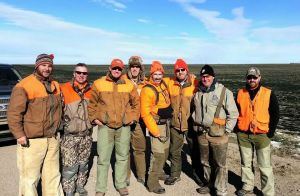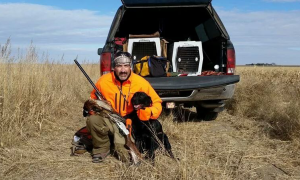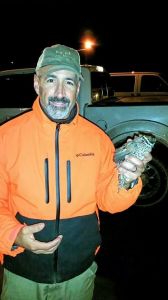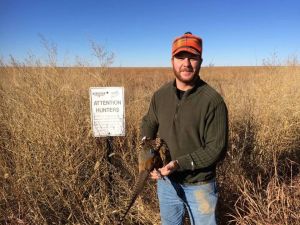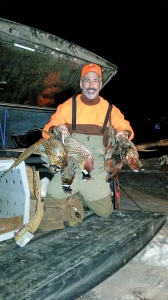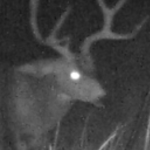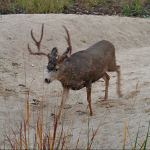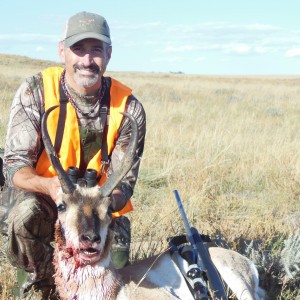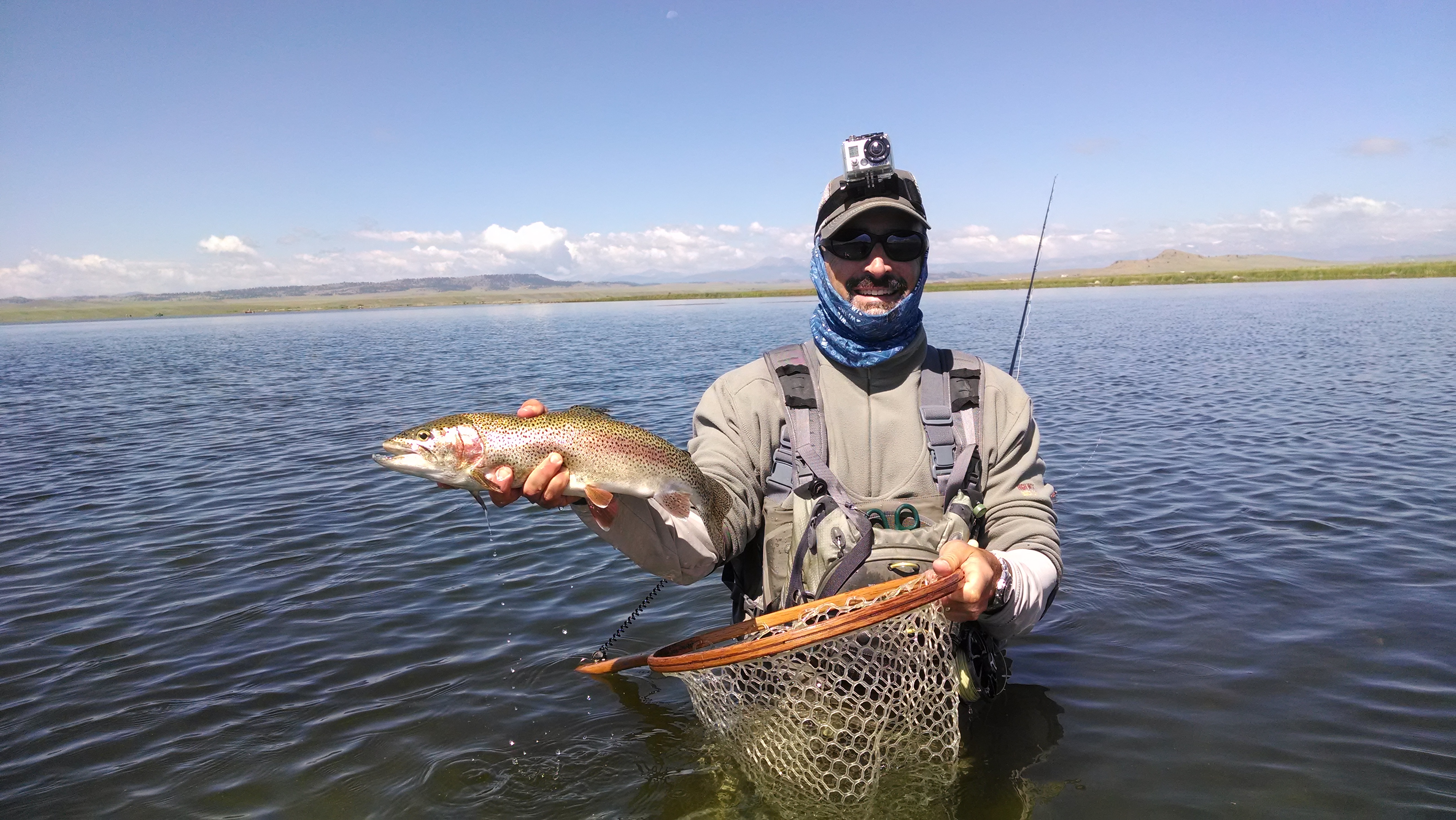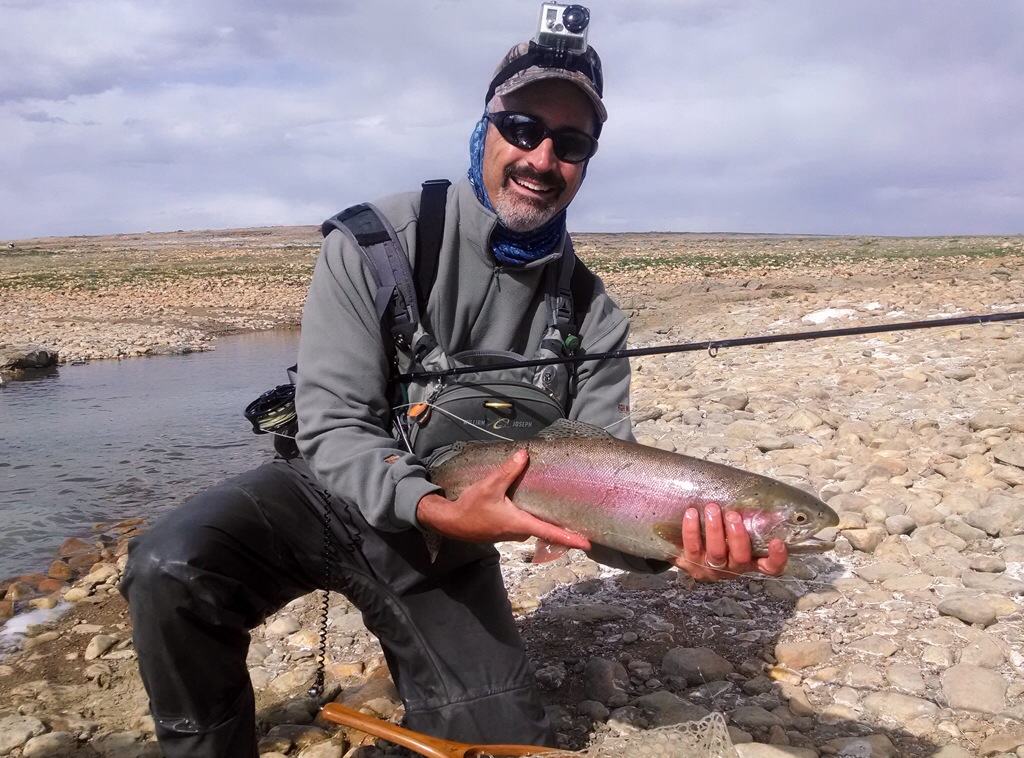Upland bird hunting is about the dogs, the landscape, the pursuit, and the friendship. The birds have had a rough go of it over the last couple of years. The drought across the west has decimated habitat required for the species’ survival. Recent moisture in Colorado has brought back some of the vegetation that had been nonexistent in 2013. It will take a few more years before we see the bird population recuperate.
Realizing the hunting would be challenging in Colorado, my friends and I decided to spend our annual upland hunting trip in McCook, Nebraska. Bird reports throughout the fall were positive, and we were willing to make the longer drive out of state in order to get some more opportunities.
Day 1
I picked up my friend Jeremy and his Brittany, Kessler early Friday morning. The plan was to hunt the day in Colorado, and make our way to Nebraska after sundown. The drive to bird country is always filled with anticipation. When you pass a shelterbelt or a grain elevator, you scan the ground for any sign of life. The first turn onto a county road, makes the heart begin to race as you realize you’re minutes away from entering the first field. My dog, Pride, is 11 years old and I realize his days as my hunting partner are numbered. I was apprehensive since our 2013 season ended with my carrying an injured Pride to the truck. Our first spot is a WIA where I try to start every trip. Picked corn fields abut lush CRP on all four sides. There is a long, pronounced draw perpendicular to a deep ditch filled with tumbleweeds. A hard, cold, and consistent wind blew from the west. This would allow a stealthy approach to the area where the cover thickens. As we neared the historically prime area, I moved north with Pride, allowing Jeremy and Kessler to man the southern flank. The plan was to pinch the middle and hope any birds flushed close. Unlike last season, the weeds are tall and the grass was dense. As I walked the edge of the draw a rooster busted, and started to fly into the corn. Startled, my first shot missed badly, but the second HEVI-Shot shell shattered the bird’s right wing. I fired a third time and the bird dropped to the ground. Pride was already running around the corn stalks, searching for the downed bird. He was struggling, so I joined in the search. It took us almost ½ an hour to locate the lifeless pheasant.
Our second stop would be at a small field containing an old, empty home and other interesting structure. Foolishly, I pulled my truck just across the road from the entrance. Despite our efforts to work silently, three roosters flushed as we loaded our shotguns. My shoulders sagged when I realized I made a rookie mistake. I brought Pride up through the middle of the field, and Jeremy worked Kessler on the northern edge. As I reached the adjoining corn, I moved quickly towards Jeremy when a rooster flushed from the deep grass. I shot the bird at 15 yards, then another rooster jumped at 25 yards. My follow up HEVI-Shot shell knocked him down as well. Pride went to locate the first bird, and Kessler grabbed the second in the corn field. I boastfully exclaimed “my day is done”. Despite my proclamation, we could not locate the initial pheasant after an extensive, and ultimately disappointing search.
Jeremy, Bob and I hunted both public and private lands throughout the afternoon. We saw a lot of hens and a few more roosters. Unfortunately, no shots were fired.
Day 2
All of the guys were ready to hunt Nebraska early. Thanks to a detailed conversation with Pheasants Forever’s Bob St. Pierre the night before, we had 5 Walk in Areas that we would hunt throughout the day. The morning was a cold 20 degrees, and the wind was not a factor. It was opening day of Nebraska’s rifle deer season, so the county roads were filled with trucks trying to spot a whitetail or muley. Our efforts resulted in very little action. We did see 5 roosters and a hen moving from private land to public. The 60 minute stalk of those birds only had a single hen take flight. We worked a few other fields, but failed to produce any results. Some lunch, a few beers and we got ready for the afternoon hunt. It was almost 3 pm, and the golden hour was fast approaching. We drove for a while before locating a large CRP field. I left an exhausted Pride in the motel room, so I was hunting over Jeremy’s dog, Kessler. As I approached a plum thicket a covey of bobwhite exploded from the gnarly tree line. Startled, I fired three quick rounds at the evading birds. The action was so fast and furious that I could not be certain if I had made fatal contact with the quail. Minutes later, I turned to my left to see Kessler on point about 60 yards away. Moving hastily, we charged toward the Brittany when the covey flushed. Three quail moved to our right, and I took the first one at about twenty yards. The second was lined up, but when I pulled the trigger, the gun did not fire. Angrily, I stared at the chamber of my Beretta A400 XPLOR Light. The bolt failed to cycle, thus rendering the weapon useless. I am confident with this shotgun, but all of a sudden I was a bit anxious. While I was upset about the shotgun malfunction, I was pretty excited to have shot my first bobwhite. As we approached the trucks, the rest of the guys told me that they wanted to hunt an area northeast of our position. It took less than 10 minutes to reach the public access, but we were running out of daylight. We lined up with the dogs and moved into the wind. Otis suddenly became obviously birdy. He was chasing a pheasant so we all started to jog. I was walked the edge of the field, actually traveling through the scattered corn remnants. Our relentless pressure forced the running rooster into the air. He flew low and left, presenting me with an easy right to left crossing shot. My first shell missed behind him, and I when I went to press the trigger for the follow up shot, my shotgun jammed again. I shouted in anger as the unscathed bird sailed to the south. A few humiliating “no bird” calls had the dogs all back working the last 250 yards of the field. It did not take them long to force up another rooster that narrowly escaped a flurry of shotgun blasts. We all gathered to discuss our approach to the eastern edge of the field. Shooting light was diminishing, and we knew we needed to pick up the pace if we were to make it back to the trucks before complete darkness. Chad and Jeff scaled the backside of a ditch in order to get a better vantage point of our area. I decided to climb up the hill as well. As soon as I stood up I yelled “rooster” as a pheasant glided in about 30 yards in front of us. Chad and Jeff turned and fired at the floating bird. The first shots missed, but Chad’s follow up round hit its mark. We did not have a dog near our specific position, so we both sprinted to see if we could locate the downed bird. Amazingly, I guessed correctly, and recovered the mortally wounded bird under some brush. It became dark quickly, and the cover was thick, so seeing my friends was difficult. To that point, I made the decision to move directly to the trucks. Without a dog, I did not anticipate locating a bird in the heavy cover. I had just flipped my shotgun over my shoulder when a rooster busted from his concealed position just 10 yards in front of me. Shocked, I managed to get my A400 into a shooting position, and took aim. The first shot was poor, and missed behind and to the right. Unfortunately, the second and third shots also missed. While I was bummed out at my failure to execute, I was thankful that my Beretta fired three successive times.
Day 3
The early morning of our final day had the crew heading to a public field a Nebraska Game Warden recommended. As we drove north, I looked left as we passed the corner of the large CRP field. There is a long and deep draw that moved to the west. Small trees and deep brush lined both sides of the draw. The cover looked ideal so I drove 500 yards past and pulled over. I told the guys to enter the field from the north, while Jeremy and I would double back, and work the land from the south. Once we saw the men and their dogs move into the field, we allowed Pride and Kessler to move ahead of us toward the shallow valley. Suddenly, shots erupted from the north. I watched an evading rooster take the full impact of a HEVI-Shot shell, and tumble out of the sky. Seconds later, another rooster took flight aiming to make it across the ravine in my direction. I re-positioned my feet in order to solidify my balance, while tracking the bird with the barrel of my shotgun. Moving at about 30 yards from my right, I squeezed off a round, and the pheasant dropped to the ground. Pride, already at the base of the gully, sprinted up the hill toward the fallen bird. We were able to make an easy retrieve, and celebrate our success. Upon inspection, the rooster had a red band on his left leg indicating he was a part of a Nebraska Game & Parks study on pheasant behavior and needs. Excited with the early action, I sprinted in the direction of my friends in order to see their birds. When I arrived, Dave told me that they could not locate the bird he had shot. I told Pride to hunt dead, and we began the search in the dense thicket. I witnessed the bird summersault out of the sky so I was confident we were searching in the right area. We put all five dogs on the one hour job, but failed to locate the rooster. Disappointed, we gathered back at the truck to determine the plan. Bob also had success in that field, and revealed that his rooster had a gold band that was worth $100!
We decided to head to Colorado, to see if we could hunt my buddy’s property in Holyoke. Dusty and I connected on the phone, and he provided me the coordinates to his land. He described 4 distinct pivots south of a specific county road. As I approached what I believed was his land, I pulled over in order to formulate a strategy with the guys. Pinching a pivot can be very effective with 8 guns and 5 dogs. We surrounded the CRP, and marched inward toward the attractive shelterbelt. As we neared the middle, hens started to rise. Unacceptably, we had left a gap in our southeastern flank, and two roosters bolted unharmed. 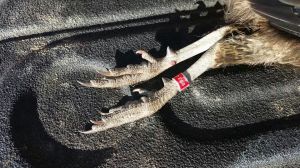
Realizing our mistake, we ensured the appropriate coverage on the next pivot. As we walked to the middle, hens began to fly. Once we all were within 50 yards of one another, a lone rooster exploded from the tall grass. He was subsequently hit with barrage of rounds, and was dead before he hit the ground.
As we were deciding on our approach to the next pivot, Dusty called my mobile phone to check in. He was making his way to our location, but could not see us. It did not take us long to realize we were hunting his neighbor’s land. A bit embarrassed, we jumped in our trucks and headed to meet Dusty. We were given a tour of the property, and given permission to hunt anywhere we wanted. We passed a wheat stubble field that had accumulated a significant amount of cover running along the edge. I looked in my rearview mirror and saw Chad out of his truck taking shots at evading birds. Realizing this location could be a special, I picked up speed, and headed to the end of the field. Greg, Scott, Jeremy and I all jumped out and walked east as the others walked west. The dogs weaved their way along the 10 yard strip of tumble weeds and assorted grasses. As we neared the middle, a rooster jumped and flew south with a strong wind at his back. Avoiding the center pivot irrigation machine, I took aim and fired. The pheasant dropped immediately to the ground. After an easy retrieval, we made the trek back to the truck, and headed home. I made a final stop at the home of my rancher friend, and handed him a case of Bud.
The initial foray into pheasant country is always full of anticipation and promise. All of us knew that the hunting would be challenging, but we were prepared to work hard to find birds. We were able to locate pheasants, and even knock some down. I will venture east with Pride a few more times over the next couple of months. My gundog is showing his age, and hunting all day just isn’t in the cards anymore. Hopefully, we will have some memorable moments before season’s end.
| Equipment | Type | Comments |
| Shotgun | Beretta A400 Xplor Light | Talked to Beretta and my gunsmith – I over lubricated the weapon. My bad. |
| Shells | HEVI-SHOT | Other shells get more press. None are more effective than HEVI-SHOT. |
| E-Collar | SportDOG UplandHunter 1875 | Works flawlessly. |
| Pack | Badlands Birdvest | I have yet to find a better pack. They need to adjust the shell holders. 12 gauge shells don’t fit correctly. |
